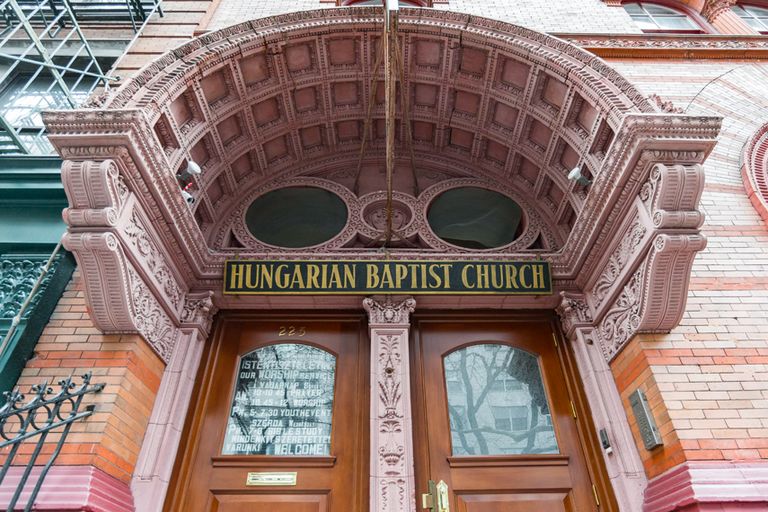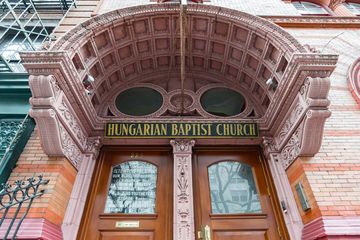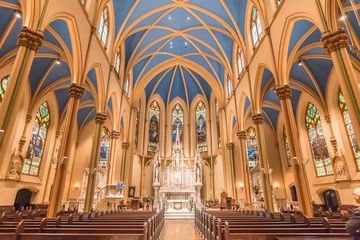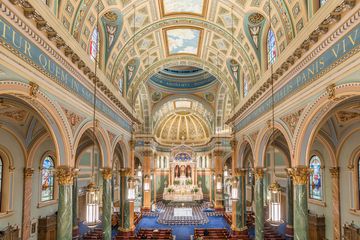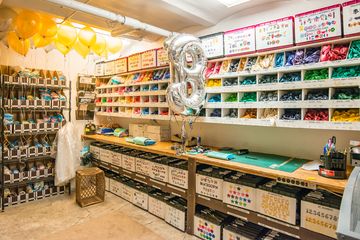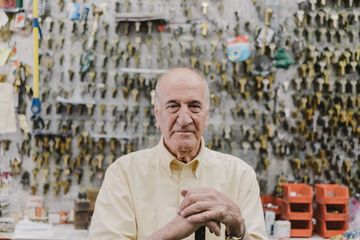Eileen Macholl, the Executive Director of the Unitarian Church of All Souls, introduced me to Mary-Ella Holst, calling her a “historian, long-standing member, and guru. ” The answer to most questions in the church, Eileen told me, is “Ask Mary-Ella. ” We learned just how extensive her knowledge was when she took us on a tour of the sanctuary and recounted the history of the congregation. She joined the church in 1964 to teach at the church school, but Mary-Ella is a well of information stretching back as far as 1819, when the congregation was first formed. It began when William Ellery Channing was invited to give a speech in Baltimore and made a trip down from Boston, where he lived. On the way, he stopped in New York to visit his sister, Lucy Channing Russel. She then invited her friends, primarily Bostonians staying in Manhattan, to listen to William give a sermon. He was not feeling well at the time, so he read the sermon while sitting down, but his listeners were inspired to start a church based on his reading. The congregation moved around in its first few decades. Its third location was in a church on Park Avenue and 22nd Street that was cheekily referred to as the “Church of the Holy Zebra, ” thanks to its odd striped design. Though the church was much derided and no longer exists, the Victorian Society in London recently got in touch with the Unitarian Church of All Souls to tell them that the church had been one of the first examples of Ruskin architecture in the United States. Before entering the congregation, Mary-Ella showed us to an old pew rental chart. She pointed to a name, George F. Baker, explaining that he was the founder of Citibank. He had been the President of the Board for fifty years, which was useful, since the church is entirely self-funded. They receive no support from a national organization and when the church is short on funds, the board is expected to come up with the money. Countless other influential figures have attended the church, including Louisa Lee Schyler, who founded the Bellevue School of nursing, and author Herman Melville. Continuing into the sanctuary, Mary-Ella spoke about William Ware, who became the first minister for the church. She described him as a “great writer, but a bad preacher. ” He had the proper lineage, however, since his father was on the faculty of Harvard and helped form the divinity school, despite his Unitarian tendencies. He was also married to the daughter of Benjamin Waterhouse, who invented the smallpox vaccination. A lot of the history of the time, Mary-Ella said, comes from the diary of Catharine Maria Sedgwick, a female writer who attended the church, but was not a member due to her gender. She also encouraged William Ware to write Zenobia, a novel that was published in the Knickerbocker, a literary magazine, and took place in Ancient Rome. William Ware also wrote Julian, which described life in Nazareth, but never mentioned Jesus as the Son of God. The most influential minister, however, is featured to the right of the altar. The bas-relief of Whitney Bellows is thought to be the largest relief that the sculptor Augustus St. Gaudens ever made. It is believed that Peter Cooper, the founder of Cooper Union, convinced him to create it after Augustus spent two years studying with Rodin. Bellows, who was “more powerful than any newspaper, ” was supremely influential in New York. He created the Union League Club to support emancipation and raised money for the sanitary commission, which eventually became the American Red Cross. He even had a hand in forming Central Park (the co-designer of the park, Calvert Vaux, was a member of the Unitarian Church of All Souls), the Metropolitan Museum of Art, and the American Museum of Natural History. Our tour ended with two important elements that bookmark the sanctuary. First, Mary-Ella turned us around to face the impressive organ. The church is very musical, with a church choir, a community choir, a youth choir, and a concert series. Though the current organ is relatively recent, the church’s historic first organ is being used in Vermont. Finally, Mary-Ella gestured to the elaborate design made with gold and silver strings at the front of the church, created by Sue Fuller. Unitarian Universalists welcome all beliefs or lack thereof. For this reason, within the sparkling design above the alter, there is the swooping arc of Islam, the Star of David, and a Christian cross. We were informed of countless other tidbits about the church and the history of the city from Mary-Ella, and were not surprised to learn that she conducts a lecture series in the summertime. The Manhattan Sideways team was riveted through her entire tour and highly recommends it to anyone interested in understanding more about New York City and its influential members throughout the years.
